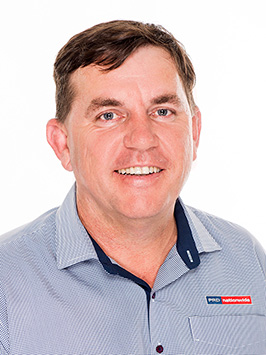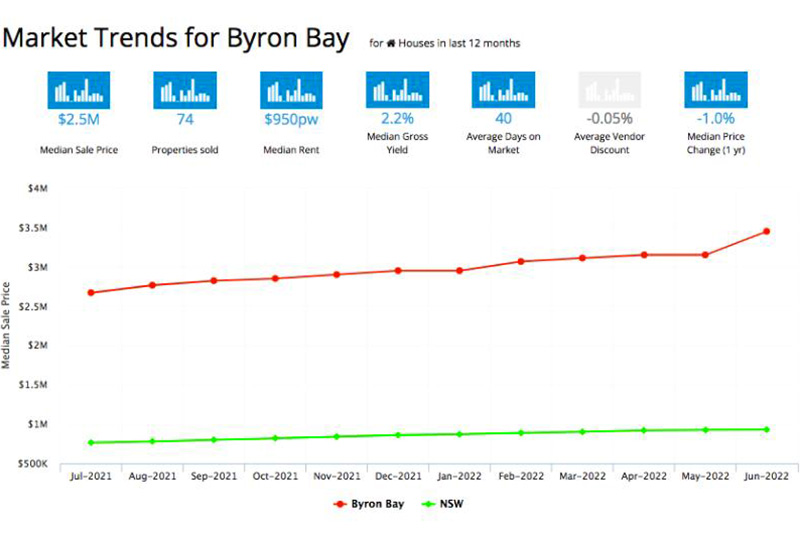No flood of enquiries but northern NSW attracting investors again
Low rental vacancy rates are producing robust rental yields and investors are returning, in the wake of costly floods, to some sections of the northern New South Wales coastal and river regions.
The Northern Rivers NSW region has had too much of a good thing.
Beautiful beaches and coastline plus three inland river systems ensure there are plenty of waterfront investment property opportunities, but floodwaters have created a $5 billion insurance bill that’s spoiled the view.
The region’s towns and cities of Ballina, Byron Bay, Casino, Grafton, Kyogle, Lennox Head, Lismore and Tweed Heads are also enduring the same labour and supply shortages as the rest of Australia, plus feeling the interest rate pinch, however, low rental vacancy rates are producing robust rental yields and investors are returning.
Surfacing on the other side of disaster, local agents remain buoyant and looking to the future.
Lismore
PRD Northern Rivers principal Rob Horder lost his entire Lismore-based office in flooding earlier this year, and now works between his two other outlets in Casino and Kyoble.
Understatedly, he says, ‘it wasn’t very nice’.
“There’s more tenants than properties available as there are still a lot of people displaced.

Rob Horder, Principal, PRD Northern Rivers
“Some of them have moved on to other areas where they could find accommodation, some are still living in caravans and temporary accommodation provided by the government, motor homes and things like that.
“People are waiting on tradespeople to become available, insurers to come through with trades people. Some of the properties we have on our rent roll aren’t going to get to their insurance potentially until 2023.”
Some investors however have returned, taking the opportunity to buy the damaged homes for a fraction of their original value.
“If they’ve got the ability to purchase and renovate, and they’ve got the skills to do it themselves, people are purchasing the flood damaged homes and getting them up to speed which is good.
“They’re mostly investors that will put tenants in them, so that’s a good thing for the market, and people needing homes,” Mr Horder said.
There are many houses in Lismore well out of the flood zone, and local council rezone rural land to encourage development.
“Goonellabah is a huge area, there are thousands of houses there, up on the hill and dry - they’re never going to be flood affected.
“The medium price for Lismore, the greater area is $550,000, but is really about $620-650,000 mark, Goonellabah is more up in the 7 and 8 hundreds (of thousands),” Mr Horder said.
Casino, Kyogle
As inland communities, Casino and Kyoble are just starting to feel the effects of the easing market, Mr Horder said.
“Lismore reacted quicker because it’s more like the city markets, whereas Casino and Kyoble are regional towns, and they’re still more affordable, so they’ve kept kicking along a bit.
“The median house price in Casino is currently $430,000 for a 3 or 4-bedroom home.”
Like the great Northern Rivers NSW region, the pandemic saw an influx of people escaping lockdowns in the capital cities and settling in the Casino, Kyogle area.
“We’ve found that most people are enjoying the Northern Rivers lifestyle and they’re staying,” Mr Horder said.
Grafton
McKimms Real Estate Director Angus McKimm has worked in the Grafton real estate market for 20 years and is the third-generation proprietor of the family business established in 1951.
He says the property boom peaked in Grafton around the Easter long weekend. Bidder numbers have since dropped and bids were more conservative.
“We noticed vendors were much better educated this cycle, so they adjusted their expectations much quicker.
“In terms of the segments, we saw a lot less high-end stuff come to market, so that’s beachfronts and riverfronts, your prestige acreage stuff, then high-end, large format mansion style residential.
“Because there was less of that coming to the market I’d say the activity held up pretty well in that sector.
“The middle range was a little bit tougher, and very dependent on vendor expectation.
“If they were realistic, they sold, if they weren’t they just sat on the market.
“The cheaper end - in Grafton that’s anything under about $600,000 - but if you look at it, about $550,000 and below - that actually has held up really well.

Angus McKimm, Director, McKimms Real Estate
“We saw a surge in rental, the rents kept going up and in fact the rents in this area have only stopped going up in the last three weeks, it’s a really crazy market.
“In Grafton, it is cheaper to own than to rent, even with interest rate rises.
“I mean, you’ve got to have a 20 per cent deposit, you have got to have your stamp duty but you’ll be paying less than you would paying a mortgage than paying rent.
“It makes it very tough for lower income earners.”
Mr McKimm adds that while prices are robust, they’re much higher three hours from Grafton, in any direction.
“Coffs Coast is more expensive, Ballina, Byron, more expensive, Armidale, New England, more expensive, then you’ve got the mid north coast, Port Macquarie, Tweed Heads; all those areas are still more expensive to rent or to buy, so we’re lucky in some ways, as crazy as the market’s been.”
Byron Bay
Byron Bay Real Estate Agency director Liam Annesley also faced floods at the start of the year, but the market has ‘found its rhythm again’, he says.
It means, investors are returning.

Liam Annesley, Director, Byron Bay Real Estate Agency
“That’s probably on the back of a couple of things - one is that people have already started to adjust what they can buy with the change of interest rates, so they’ve already factored that in, or they’ve done new loans and realised what they can afford.
“That readjustment, I think, has already happened, and now they’re coming back into the market looking either for an investment they can buy or it’s something they’ve had their eye on for a while.
“Now there’s a larger supply and a fair bit of competition out there, they’re hoping there’s more room for negotiation with agents, compared to Covid when they had to pay whatever the price was.”
Median house prices in the Byron Bay area vary.
“In the township of Byron Bay itself, there’s not a lot of houses in that pool, so we don’t have a lot of property to draw from and that’s why you see places on the peripheral, like Suffolk Park, Ocean Shores or Brunswick Head getting pulled into the mix.
“Whenever you’re looking at pricing, you’d struggle to find a house under $3 million,” Mr Annesley said.
During Covid the influx of people saw rents explode.
“There were people getting $30,000 and $40,000 a week on a high-end rental - it was just out of control.
“There’s been a retraction and that happened moreso in about October last year, when people were being called back to the office.
“People who came from the cities are going through a bit of an adjustment too. They’re asking themselves if they miss all the things a city brings, and do they want that.
“Some move back and others have decided to stay.”



















